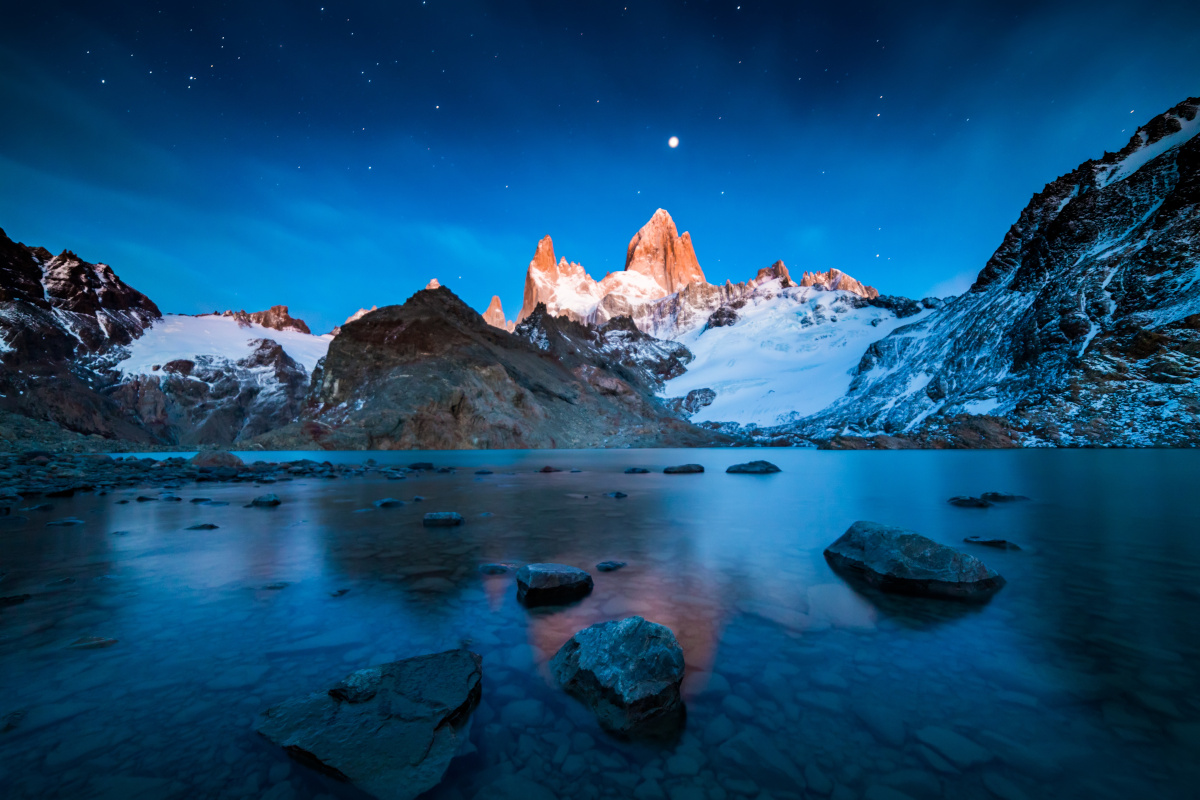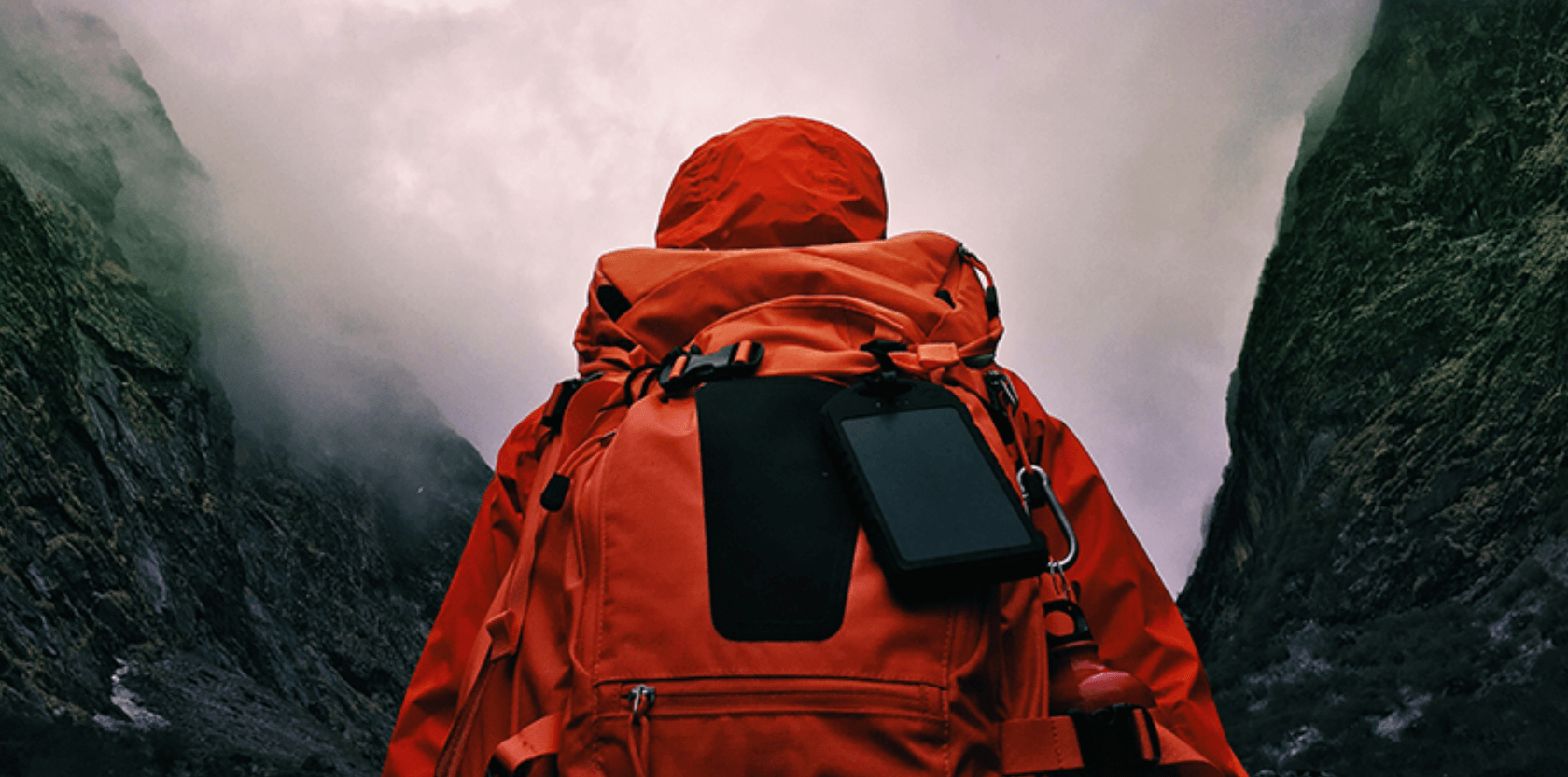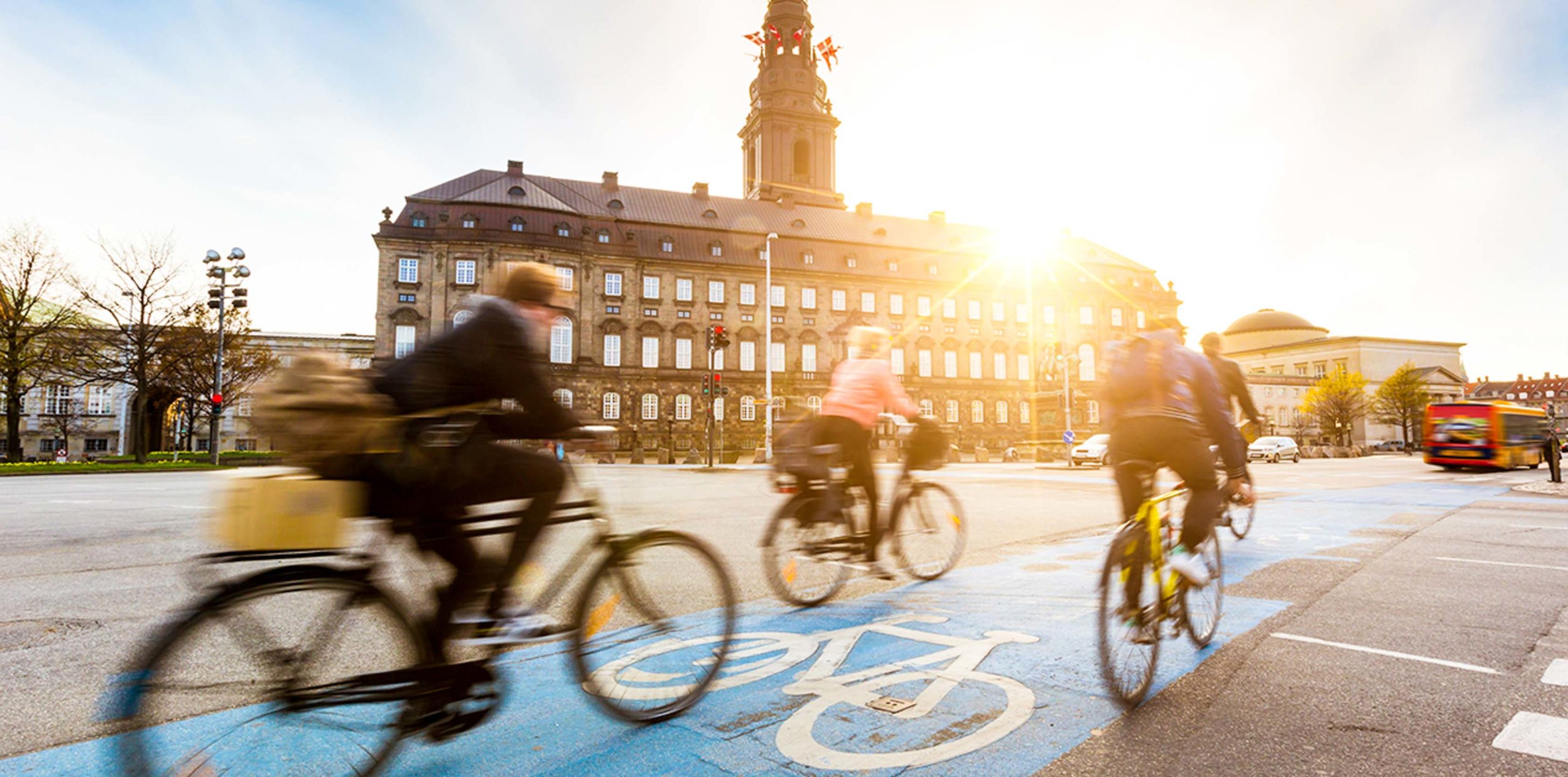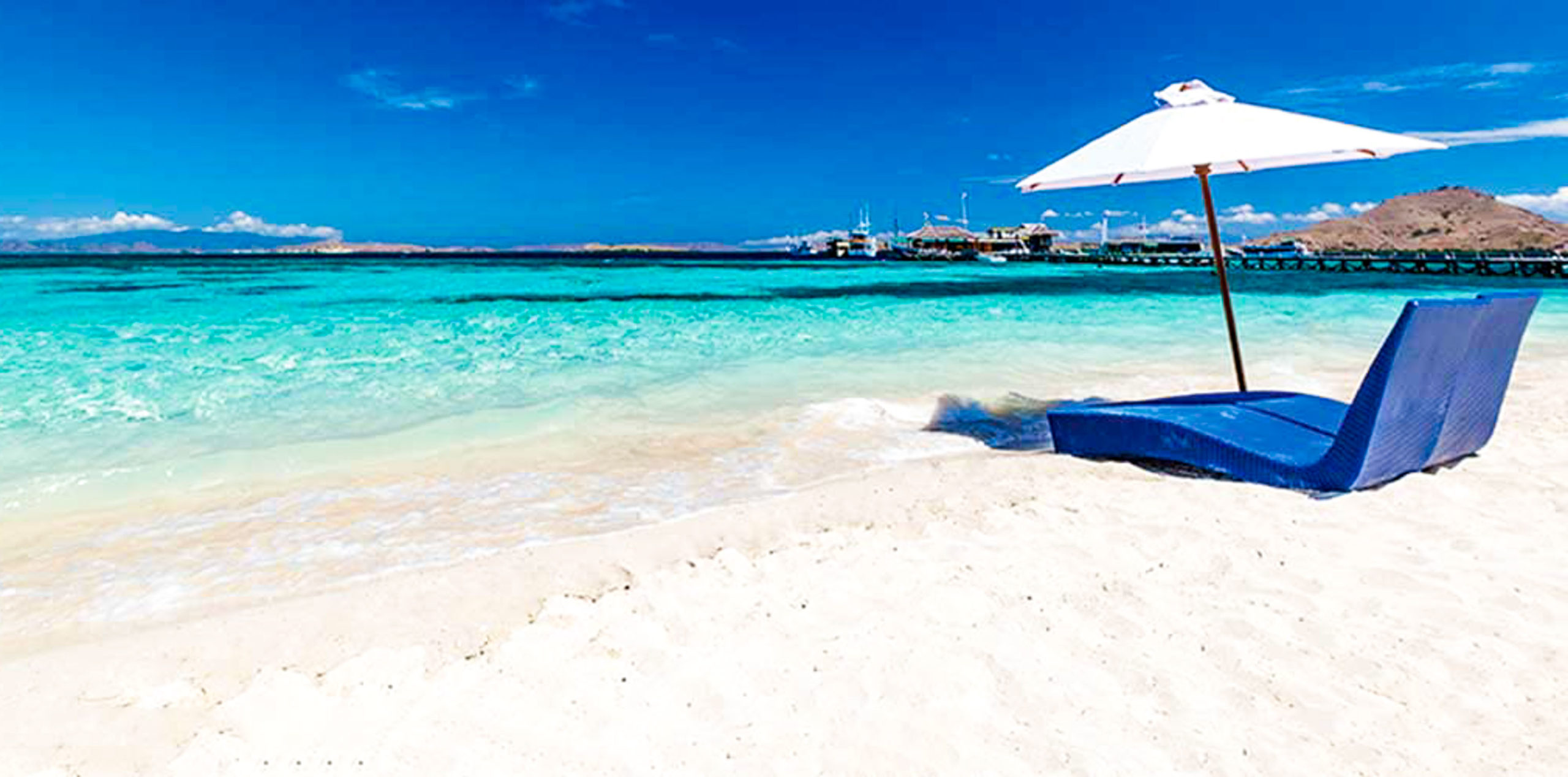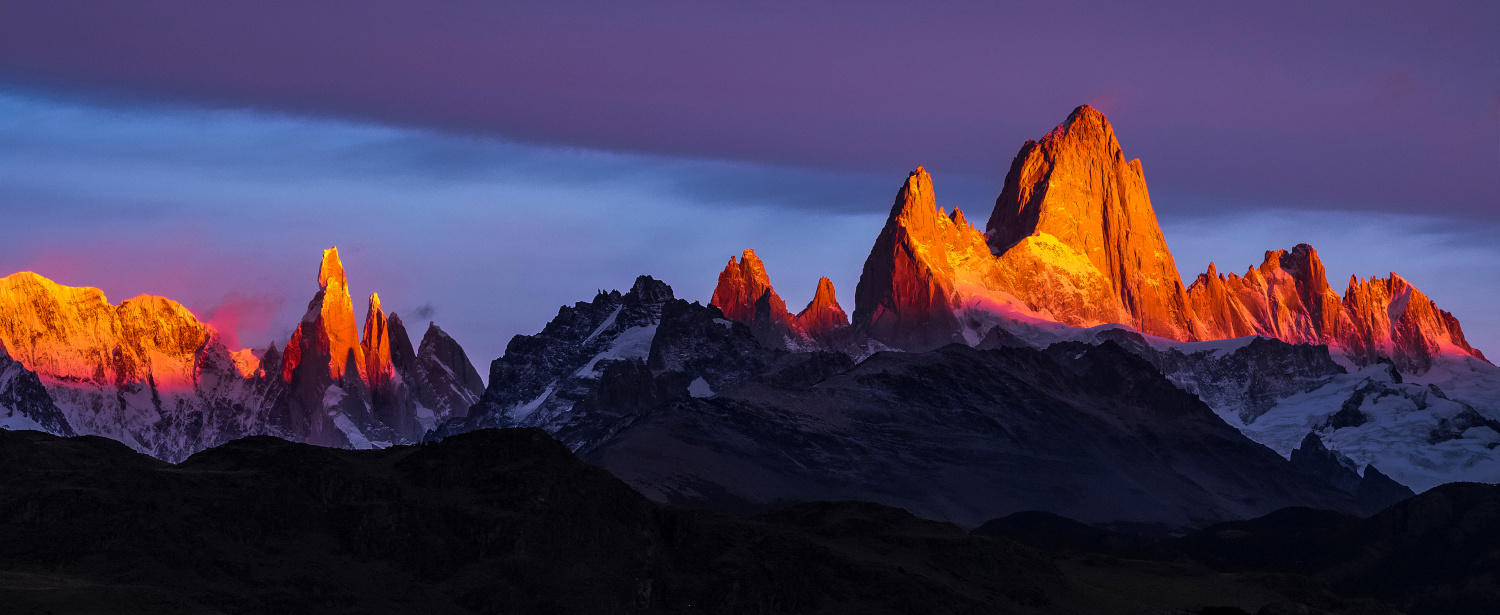
Trekking Insurance for Patagonia
Why You Need Trekking Insurance in Patagonia
Patagonia is one of the most breathtaking and remote trekking destinations on Earth. Towering granite spires, vast glaciers, and wild winds define the landscapes of Torres del Paine in Chile and Los Glaciares National Park in Argentina. But with its beauty comes real risk: this is a region of unpredictable weather, remote terrain, and limited emergency infrastructure.
While many adventurers are self-reliant, this sort of high-altitude trekking means accepting that help may be hours - or even days - away. Medical extraction from the backcountry can involve helicopter rescue, multiple border crossings, or long transport to regional hospitals in Punta Arenas, Río Gallegos, or even Santiago. With insurance, you're not just covering costs, you're buying peace of mind in case you're hurt or injured, fall ill or are faced with extreme weather or local political issues.
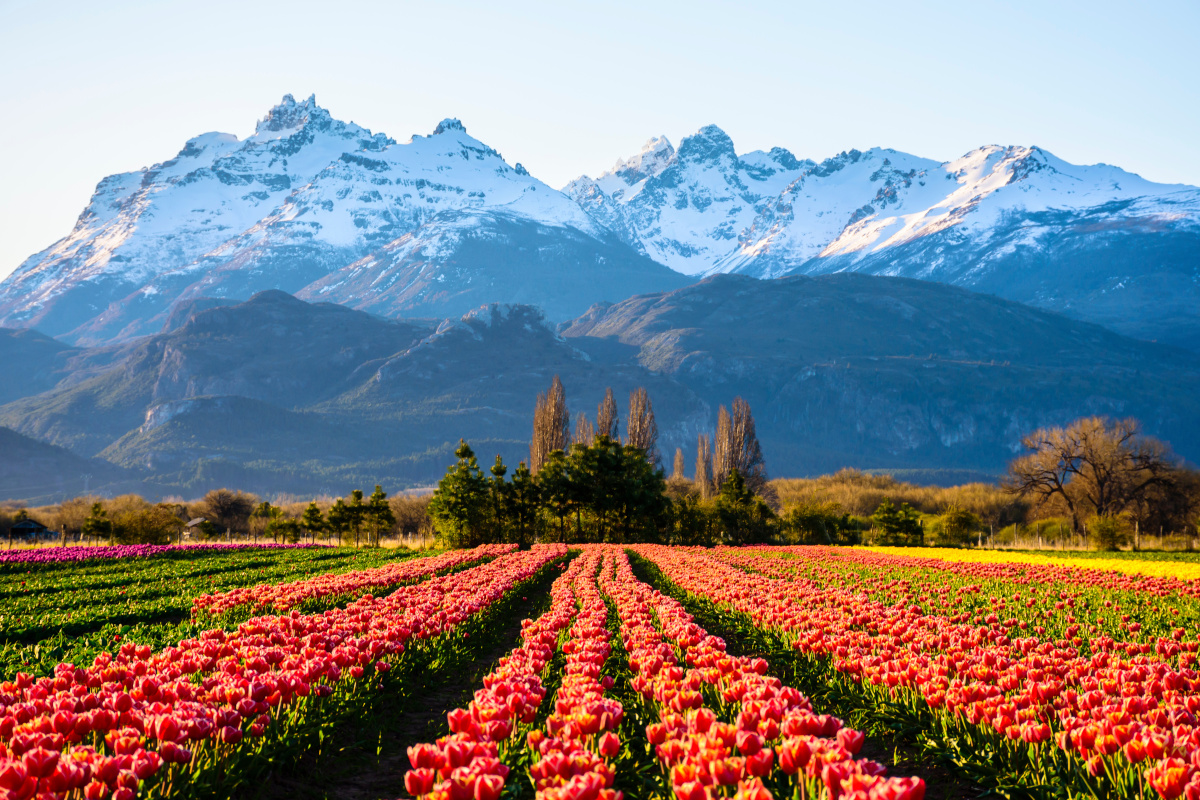
Common Risks for Patagonia Hikers
You probably have a few questions and concerns about this adventure. Here’s what to know before you go!
Extreme Weather and Trail Closures
Weather in Patagonia is wildly unpredictable. Bluebird skies can shift to snow squalls in minutes. As you explore Torres del Paine, gale-force winds exceeding 80 km/h often force trail closures or make crossings dangerous. You have to be prepared for anything and know, for example, that:
- Snowstorms can occur even in summer
- Ferries to Paine’s Grey Glacier or across Lago Pehoé are frequently canceled
- Flights to Punta Arenas or El Calafate are vulnerable to wind delays
Trip Delay Reimbursement ensures you’re covered if trail access is halted or flights are canceled unexpectedly, while a good trip cancellation (or ‘trip can’) policy can cover up to 100% of your cost.
Note too that Cancel For Any Reason, or “CFAR”, coverage allows you to cancel for a multitude of personal reasons. (But also note that CFAR is an early purchase benefit, so it must be purchased within a specified time frame immediately following initial tour payment.)
Wind-related closures have impacted the Mirador Base Las Torres hike and ferries across Lago Grey. These delays can result in missing pre-paid refugio nights or guided glacier hikes. Insurance can help you recover these expenses.
By the way, refugio translates to ‘refuge’ in English. While they were once simple mountain huts, they’re now more like guesthouses. Rustic, to be sure, but warm, comfortable places where you can relax after a long day of high-altitude trekking in these gorgeous mountains.
Physical Injuries and Limited Medical Access
Common injuries include:
- Sprained ankles on rocky switchbacks
- Hypothermia on wet or snowy trails
- Dehydration in high-exposure areas
In the O Circuit or on the way to Cerro Torre, help can be hours away. Your route out to safety and medical support may involve:
- Trek out with ranger assistance
- Boat or horse extraction – or even helicopter rescue
- Airlift to doctors Punta Arenas or Río Gallegos
Even relatively minor injuries can escalate in cold, isolated terrain and become life-threatening.
Lost or Stolen Gear
Patagonia is generally safe, but be aware that theft can occur:
- Shared refugios like Paine Grande or Cuernos are not immune to gear loss
- Luggage thefts have been reported in El Calafate bus terminals
- Border crossings increase the chance of forgotten or misplaced items
Pro tip: Always lock your gear when staying in hostels or shared mountain lodges. Some trekkers use small lockers or secure zip ties to deter possible thieves. As always, be aware of your surroundings, including fellow hikers.
Disruptions and Delays
Traveling in Patagonia involves tight coordination:
- Buses between Puerto Natales and Torres often sell out or run late
- Strikes or weather may cause last-minute flight changes
- Closed passes can delay multi-day treks
In 2023, a regional airline strike forced hundreds of travelers to reroute via long-distance buses and delayed departures by several days. Having Trip Delay Reimbursement can be the difference between financial strain and smooth rescheduling.
Look for Trip Delay Reimbursement in your policy details to recover nonrefundable expenses (permits, lodging, guides) and make sure it covers cancellation too, just in case.
What to Look for in a Patagonia Trekking Insurance Policy
It’s just wise to be safe and make sure you’re covered before you set foot on the trail. We advise you to keep these key elements in mind as you plan your tour.
Emergency Medical Treatment and Evacuation
Not all policies cover remote area extraction or include field rescue. Patagonia demands this level of support.
- Insurances that include rescue coordination and emergency evacuation are best for high-altitude trekking or O Circuit hikers.
- Your route to safety may involve transit to Punta Arenas (Chile), Río Gallegos (Argentina), or even Santiago.
Before you get injured, sick or have some other medical emergency, ensure your plan includes both medical insurance with evacuation and coverage for search-and-rescue (SAR) operations if you’re unable to self-rescue. Having professional SAR teams out there looking for a hiker gets expensive, fast. You don’t want to have to suddenly face that bill while recovering in Santiago.
Coverage for Gear and Baggage
You’ve got to be protected against gear loss, as a lost pair of boots or backpack can derail your long-planned and perhaps once-in-a-lifetime tour. After all, baggage can be mishandled or lost between Argentina and Chile, theft does occur in refugios and transport hubs and sometimes stuff (in this case, key stuff) can just get lost.
Some additional advice: high-value items like camera gear, trekking poles, or down jackets should be specifically insured if they exceed general per-item limits. Double-check the fine print of your policy to ensure that it covers your specific needs.
Delay and Cancellation Protection
You need protection for:
- Weather closures (e.g., Valle del Francés trail blocked)
- Canceled buses from El Chaltén or Puerto Natales
- Missed connections due to storms or volcanic ash
Look for:
- Trip Delay Reimbursement
- Coverage for non-refundable permits and refugio bookings
Delays in Torres del Paine often cascade, as nightly stops are pre-booked in designated camps or shelters. Cancellation protection ensures you’re not stuck absorbing these costs.
Adventure Activity Inclusions
Many policies exclude “adventure sports” like:
- Trekking above 3,000 meters
- Ice hiking on Perito Moreno Glacier
- Sea kayaking in Lago Grey
Adventure inclusions should also cover rescue-related expenses on glaciers or kayaking excursions, especially where fast-flowing rivers or ice crevasses are present.
Which Redpoint Plan is Right for You?
Plan Comparison Table
| Plan Description | For These Trips | Best For These Activities | For These Travelers | Includes Rescue From Point Of Injury Or Illness | Includes Optional Security Extraction For Unexpected Natural Disasters, Terrorism, Civil War, And Other Dangerous, Chaotic Events | Includes 24/7/365 Access To Paramedics, Nurses, And Military Veterans | ||
|---|---|---|---|---|---|---|---|---|
|
|
Best evacuation and rescue with the premier travel insurance designed for adventurers | Travel to remote locations or developing countries without immediate access to quality emergency medical services (ambulance | Adventure seekers, climbers, skiers, sports enthusiasts, hunters, expeditions, safaris, remote travel, international travelers, humanitarian efforts, and more | Travelers who want evacuation and rescue from the point of emergency home combined with premier trip cancellation/interruption, primary medical expense coverage, and more | View Ripcord | |||
|
|
Best evacuation with the premier travel insurance coverages designed for passionate travelers | Travel to developed locations with immediate access to quality emergency medical services (ambulances) | Major international tourist attractions, bicycle touring, day hiking, cultural experiences, urban travel, leisure travel, luxury trips, and more | Travelers who want evacuation home if they’re hospitalized combined with premier trip cancellation/interruption, primary medical expense coverage, and more | View Cavalry | |||
|
|
Standard industry travel insurance for “budget conscious” travelers | Best for domestic or budget travel. Medical evacuation to local suitable hospital as determined by the attending physician | Domestic travel and leisure activities | Budget-conscious. Content with medical evacuation to the nearest appropriate facility only if medically necessary | View Harbor |
Ripcord
- Best for remote trekking, high altitude, and complex itineraries.
- Covers medical evac, field rescue, and adventure activities.
- Ideal for those venturing into Torres del Paine’s backcountry or the Fitz Roy range.
Cavalry
- Balanced coverage with lower cost.
- Good for travelers sticking to shorter treks or well-supported refugio routes.
- Includes moderate medical and baggage coverage.
Harbor
- Budget plan with strong Lost Gear Coverage and trip delay reimbursement.
- Ideal for trekkers staying in towns (El Calafate, Puerto Natales).
- Does not include adventure activities.
Essential Trekking Tips for Patagonia
Pack for Wild Weather
There’s a reason why in Patagonia they often say, “You can get all four seasons in a day.” You’ll need gear that can withstand sudden snow, heavy wind, and sun, and possibly do so all in one day. Packing smart means safety, comfort, and resilience. As they say, “There’s no bad weather, only bad gear.”
“Remember, whenever you head out into the backcountry to avoid any cotton garments. While it’s a great fabric at home, once cotton gets wet it will not insulate you and can actually draw heat away from your body. So always choose garments that will keep you warm if they get wet, like wool or synthetics.”
Use this comprehensive gear list to protect yourself and stay healthy and comfortable:
Clothing: Layering is Survival
Patagonia’s weather can swing 30°F (15°C) in a few hours. When it comes to your clothing, think technical layers, not bulk. Make sure you have:
- Moisture-wicking base layers
- Insulating mid-layers
- Protective outer layers that are abrasion-resistant and water- and windproof
Accessories
- Warm hat or beanie
- Buff/neck gaiter (blocks sun, wind, dust)
- Sun hat with brim
- Lightweight gloves (plus insulated gloves in shoulder seasons)
- Gaiters (optional — good for mud, snow, scree)
Footwear
- Broken-in waterproof hiking boots (high ankle support recommended)
- Camp shoes (Crocs or sandals for refugios)
- 3–4 pairs wool or synthetic hiking socks
- Liner socks (optional — help prevent blisters)
Note that the O Circuit includes river crossings and mud, so waterproof boots are essential.
Gear Essentials
- 65–75L backpack (multi-day hikes)
- 20–30L daypack (for base hikes like Laguna Capri)
- Rain cover for packs (A smart investment as rainstorms are frequent and fast)
- Dry bags or garbage bags for internal waterproofing
- Trekking poles (lightweight and collapsible)
- Headlamp with extra batteries
- Sunglasses (polarized, UV-blocking)
- Water bottles (2L total capacity) or hydration bladder
- Water filter or tablets (some camps don’t treat water)
- Multi-tool or knife
- Lightweight towel
- Small ziplock bags (for organizing & waste)
- Trekking map or downloaded offline trail maps
Sleep System
- Sleeping bag (rated to 0°C or lower, even in summer)
- Sleeping pad (if camping without refugios)
- Earplugs (for refugios or wind)
- Lightweight pillow or stuff sack filled with clothes
Toiletries & Medicines
- Toothbrush, paste, biodegradable soap
- Quick-dry towel
- Wet wipes
- Sunscreen (SPF 50+) and lip balm with SPF
- Bug spray (flies are common near lakes)
- First aid kit
Documents & Electronics
- Passport + copies (in ziplock)
- Park entry permits + printed bookings
- Travel insurance details (printed + digital copy)
- Power bank (outlets are limited in refugios)
- Charging cables
- Adapters (Chile and Argentina use different plugs)
- Camera or GoPro
- Offline apps, such as those from Maps.me, Windy, iOverlander
Optional but Useful
- Lightweight book or e-reader
- Journal + pen
- Small lock (for lockers at refugios)
- Duct tape (gear fixes)
- Zip ties
- Packable tote (for laundry or town use)
“Pro tip: when hiking a glacier or any snowfield, don’t forget to apply sunscreen on the underside of your nose. Most people don’t ever do this because they’ve never had to apply sunscreen in that specific spot. But these expansive fields of white crystal ice reflect the sun back up toward the trekker and mean that normally shaded areas, such as the underside of your nose, are getting hammered with UV radiation.”
Trail Etiquette and Safety
- Stay on marked trails, as erosion is a serious issue
- Respect wildlife: don’t approach foxes or guanacos (a wild South American camelid, closely related to llamas and alpacas)
- Use trekking poles on muddy or icy sections
- Carry out all trash: Leave No Trace applies
- Check in with rangers at CONAF posts before entering Torres del Paine (CONAF is the Chilean national park service)
Booking Logistics
- Reserve campsites/refugios in Torres del Paine months in advance.
- Check Chile & Argentina park permit requirements.
- Monitor local travel advisories, especially during border strikes.
- Some routes, like Paso John Gardner, require proof of booking for access.
All of the refugios and campsites are run by one of three organizations. Reserve your spots via these organizations’ websites – and be SURE to bring the confirmation with you into the park. Those organizations are:
- Vertice Patagonia
- Fantastico del Sur
- CONAF
FAQs About Patagonia Travel Insurance
